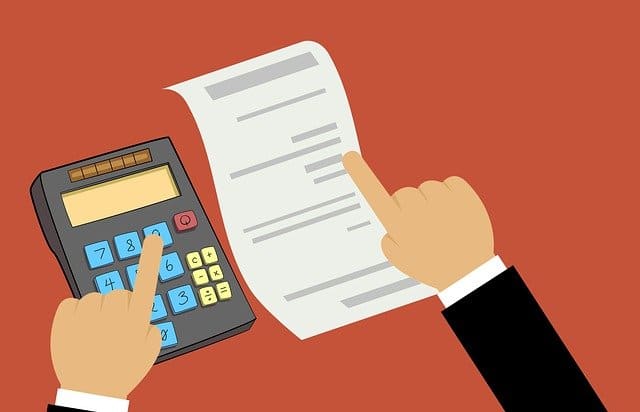If you become disabled or develop a condition that prohibits you from working, you may qualify for one of two federal disability programs: Social Security Disability Insurance (SSDI) or Supplemental Security Income (SSI). Though the Social Security Administration (SSA) hosts both programs, states have the right to tweak eligibility and application requirements. If you hope to receive Social Security Disability benefits as an injured resident of New York, it is important to familiarize yourself with the entire benefits process. It may also be in your best interests to retain the help of experienced Social Security Disability lawyers in New York.
Types of Disability Benefits Available
The SSA sponsors two main types of disability programs to help injured Americans: SSDI and SSI. It is important to clarify the distinctions between the two programs, as each comes with its own eligibility requirements and utilizes unique methods for calculating benefit amounts.
Social Security Disability Benefits
Title II of the Social Security regulations defines SSDI as disability benefits that are only available to individuals who have paid into the Social Security system. The SSA bases the amount of monthly benefits on the average lifetime earnings that the program covers for any one applicant, which it calculates via “work credits.”
Supplemental Security Income
Supplemental Security Income is a needs-based program. Proof of work history is not necessary to qualify. How much in benefits you may receive depends on your household income and the value of your available resources.
Eligibility Requirements for SSDI/SSI Benefits
The qualification process for SSD and SSI benefits varies considerably. Because SSDI determines eligibility based on a person’s contribution to the program over the years, qualifying requires demonstrating your work history. As a needs-based program, SSI bases its decisions largely on a person’s income and availability of resources. A New York Social Security Disability claims attorney can advise you on eligibility requirements and help you work through the appropriate application.
Qualifying for SSDI
Qualifying for Social Security benefits is a two-part process. First and foremost, you must demonstrate that you have a qualifying medical condition. A qualifying medical condition is not just one that your doctor diagnosed, but rather, one that you can find on the SSA’s List of Impairments and/or that meets three basic criteria:
- It prevents you from doing the same work that you did pre-disability.
- It prevents you from engaging in some other type of gainful activity.
- It is a condition that medical professionals expect to last for more than a year or that may result in your death.
Work Credit Requirements
If your disability qualifies, you must then meet the strict work credit requirements. You must demonstrate that you have accrued the necessary number of credits for your age group to qualify for benefits under the SSDI program. Naturally, the younger you are, the fewer work credits the SSA will require from you.

For example, if you sustain a disability at 24 years of age or younger, you may only need to demonstrate that you earned six work credits during the three-years before you became disabled. If you are younger than 31, you may be eligible for benefits if you earned enough work credits to show that you worked for a minimum of half the time between the age of 21 and the age at which you sustained your disability. For instance, if you became disabled at 26, you would need credits for 2.5 years, or 10 credits. Below is a chart that demonstrates how many work credits you need based on your age:
| Age at Which You Become Disabled | # of Work Credits Needed |
| 31-42 | 20 |
| 44 | 22 |
| 46 | 24 |
| 48 | 26 |
| 50 | 28 |
| 52 | 30 |
| 54 | 32 |
| 56 | 34 |
| 58 | 36 |
| 60 | 38 |
| 60+ | 40 |
Generally speaking, if you are older than 30, you must demonstrate that you earned at least 20 work credits in the 10 years immediately preceding the time at which you sustained your disability.
Earning Work Credits
Earning work credits is a fairly easy task to accomplish. All you need to do is earn and report a certain amount of money each year. You can earn four credits per year, and each credit is worth a set amount. The amount you must earn to earn a credit changes from year-to-year based on inflation and the cost of living. As of 2022, you earn a single credit when you earn $1,510 in taxable income. To earn four credits in 2022, you must make at least $6,040. Because you can earn four credits in a single year, you only need to work for five years in the 10-year period leading up to your injury to qualify for Social Security Disability benefits.
Qualifying for SSI
SSI is a needs-based program and, as such, has drastically different eligibility requirements than SSDI. A Social Security Disability lawyer can help you understand the differing requirements.

To qualify for benefits under this program, you must prove a few things:
- You are 65 years of age or older; are completely or partly blind; and/or have a medical disorder that prevents you from working for at least one year or that medical professionals expect to result in death
- You are a U.S. citizen, or you can meet explicit requirements for non-citizens
- You do not own more than $2,000 worth of assets as an individual or more than $3,000 as a couple
The value of your home does not count toward the value of your assets, and nor does your primary vehicle. The SSA calculates your benefits amount using the Federal Benefit Rate.
Benefit Amounts
If you qualify for SSDI or SSI, the SSA will calculate your benefits based on either your pre-disability income or your current income, depending on for which program you applied.
Calculating SSDI Payments
If you qualify for SSDI benefits, the Social Security Administration will base your monthly benefits amount on your average monthly earnings prior to your injury. The formula for calculating these earnings is complex and takes into consideration three main factors:
- The age at which you became disabled
- How many years you worked leading up to your injury
- Your Average Indexed Monthly Earnings (AIME)
Neither the severity of your injury nor your total annual household income affects your benefits amount.

To calculate your AIME, the SSA will look back as much as 35 years. It will identify the years in which you earned the most money and add together your total annual earnings from those years. It will then divide the total by the number of months for those years. The SSA will round down the quotient, and the resulting figure would be your AIME. Though the amount of benefits varies from recipient to recipient, the average monthly cash benefit is between $1,000 and $1,200 per month, with recipients in higher-income brackets receiving an average of $2,400 per month. The highest category of earners received $3,011 in Social Security Disability benefits in 2020.
Calculating SSI Payments
The SSA uses income to calculate SSI payments as well. However, instead of basing your benefits amount on your average total earnings over the years, it bases it on your current income in relation to the Federal Benefit Rate (FBR). As of 2022, the Federal Benefit Rate is $841 for single applicants and $1,261 for married applicants. The rate is the same nationwide, which means a single individual who does not earn any income and who meets the asset requirements for SSI may collect $841 in benefits per month. The SSA may reduce the monthly benefit amount if you or another member of your household earns an income. To determine your benefit amount in this case, it would calculate the difference between the FBR and your household monthly income. For instance, if you bring in $200 from odd jobs each month and your spouse brings in another $150, the SSA would reduce your benefits amount by $350, to a total of $911 per month. Cost of Living Adjustment for Social Security Disability Benefits and Supplemental Security Income The Social Security Administration understands that the cost-of-living is always in flux. For this reason, it accounts for adjustments in costs of living by conducting an annual cost of living adjustment (COLA). The SSA uses the Consumer Price Index (CPI) to determine the increase. For reference, in 2020, the COLA provided a 1.6% increase in benefits. In 2022, the COLA was a whopping 5.9% increase.
Receive SSDI/SSI Benefits
If the Social Security Administration approves you for Social Security Disability benefits, you may have several questions:
- When will you start receiving your SSDI or SSI benefits?
- For how long can you receive benefits?
- Can you work while receiving benefits?
- Can benefits just stop?
- How will you receive benefits?
When will you start receiving benefits?
When you will begin to collect disability benefits depends on whether you applied for SSDI or SSI, when you submitted your application and whether you filled out your application in-full and correctly. Assuming your application did not require any edits (a feat typically only possible with the help of a New York Social Security Disability attorney), you should receive your first disability check within six months of the date you became disabled.

The first five months is a mandatory waiting period, which the SSA implements to ensure that your disability is, in fact, long-term. Because SSA pays out SSDI one month behind, the sixth month includes the month your disability began. It is important to note that payments are retroactive for up to 12 months before the date of the application. Regardless, you will receive benefits for the first six months following your injury. However, if your disability began six months prior to the date of your application, you can collect benefits for those six months as well. The SSA does not require a waiting period for SSI benefits. If approved, you will begin to receive benefits the first day of the first month following the date of your application. Payments are not retroactive.
For how long can you receive SSDI/SSI benefits?
Both SSDI and SSI benefits will continue until one of two things happens: You turn 65 or your medical condition improves to the point where you can engage in substantial gainful activity. If it continues beyond retirement age, Social Security Disability benefits will stop and Social Security Retirement benefits will kick in. To ensure people do not abuse the system, the SSA conducts periodic reviews, which it refers to as Continuing Disability Reviews. The time between reviews depends on the severity of your condition and whether your doctors expect you to improve. Common intervals at which the SSA conducts reviews are every 18 months, every three years and every seven years, depending on a beneficiaries odds of improvement and the extent of the disability.
Can you work while receiving SSDI benefits?
You can work while receiving SSDI benefits, but only to an extent. If your health improves to the point where you can engage in substantial gainful activity (SGA), the SSA may discontinue your benefits. SGA refers to any activity that allows you to earn up $1,350 per month. Per the SSA, if you can earn $1,350 on your own, you no longer qualify as “disabled.” The SGA threshold is higher for blind individuals, at $2,260 per month.

The SSA does allow for a trial period, however, in which you can assess your ability to return to work. The trial period is nine aggregate months long, meaning you can spread out the work over a period of longer than nine months. You cannot earn more than $1,350 per month during this period. If successful — meaning, you feel confident in your ability to return to work — you enter the “extended period of eligibility” (EPE). You will continue to receive your benefits during the 36-month long EPE so long as your monthly earnings do not exceed $1,350. Once you surpass the SGA threshold, you enter the “grace period.” Once the grace period begins, you will receive three more months of SSDI checks — one for that current month and two for two subsequent months. You should discuss the pros and cons of engaging in such a trial period with a Social Security Disability lawyer prior to beginning one. If you unwittingly enter a trial period and engage in SGA, you may accidentally start the clock on the cessation of your benefits before you are ready.
Can Social Security Disability benefits simply stop?
There are a couple of other reasons, outside of you engaging in SGA, that your SSDI benefits may cease. The first is because you end up in jail or become institutionalized. If either occurs and if the period of institutionalization or incarceration exceeds 30 days, your benefits will temporarily stop. However, the SSA will reinstate them the month after your release. The second reason the SSA may stop your benefits is if you reach retirement age, which is currently set at 66 years and 4 months of age. If you still require benefits at the time of retirement, the SSA will switch your benefits over to Social Security Retirement. The third and final reason your benefits may cease is if you received benefits on someone else’s income and yours or their circumstances have changed since the date of application. For instance, if you receive benefits based on a parent’s income, the SSA may discontinue your portion once you turn 18, get married or move out of the family home. If you receive Supplemental Security Income, your benefits may stop if your household income increases of if you receive monetary assistance from other organizations.
Applying for SSD Benefits
Before you begin the application for Social Security Disability benefits, it is important to note that the SSA denies roughly 65% of first-time applications. This figure underscores the point that the SSDI application process is tedious and full of opportunities for you to make errors.

To increase your odds that you will submit a successful application the first time around, you should partner with a skilled Social Security Disability lawyer in New York, NY who can advise you through the application process and serve as your advocate during the hearing and appeals process (if the latter becomes necessary). It is also important that you begin the application process as soon as you stop working. The SSDI application process involves three steps. These three steps are much more involved than they initially appear:
- Gather all pertinent medical and personal information, including marriage certificates, names and birthdates of your spouse and children, military service dates, tax and income forms, checking and saving accounts numbers, and more.
- Put together a detailed disability report.
- Go online and complete the disability report, disability benefits application and other documentation.
The application process is extensive. An experienced New York Social Security Disability claims attorney can not only advise you on what you need to do to submit a strong application but also, he or she can handle much of the process on your behalf. To increase your odds of receiving approval the first time around, or if you’re initially denied social security benefits, entrust your case to our Social Security Disability benefits lawyers at Pyrros & Serres, LLP, to take much of the stress out of SSI and SSD claims. Contact our law firm to schedule your free consultation today.
Sources:
Social Security Administration: https://www.ssa.gov/OP_Home/ssact/title11/1100.htm https://www.ssa.gov/disability/professionals/bluebook/AdultListings.htm
https://www.ssa.gov/benefits/disability/qualify.html
https://www.ssa.gov/pubs/EN-05-11069.pdf https://faq.ssa.gov/en-us/Topic/article/KA-01777
Disability Benefits Help: https://www.disability-benefits-help.org/ssdi/qualify-for-ssdi
New York City Bar: https://www.nycbar.org/get-legal-help/article/public-benefits/social-security-disability-insurance-supplemental-security-income/types-of-benefits-available/



